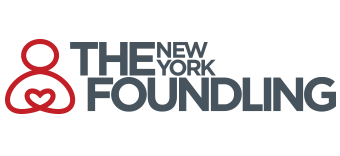How to Write a Winning Grant Proposal
How to Write a Winning Grant Proposal
Our talented Grants Manager, Ava Rosenblatt, shares her tips.
As many non-profit professionals know, getting funding for your ideas and projects isn’t easy. Oftentimes, even when you do find a funder with interests and priorities that are well-aligned with your own, the process for creating and submitting a grant application can be a daunting task. Here are some key guidelines for writing a proposal that is clear, compelling, and fundable:
Get to know your potential funder. Before you apply for a grant, first make sure you know everything you can find out about the grantmaker you are applying to. The Foundation Center is a great resource for this, but you can also do a Google search to see if they have a website with information on their priorities and the application process (jackpot!). Guidestar.org is also a good resource – a foundation’s form 990 will give you a good sense of what types of organizations they have funded in the past and the typical size of their grants.
Stick to the grantmaker’s guidelines. If a funder gives clear guidelines for how they want the proposal to be structured, formatted, and sent, make sure to stick to those guidelines rigidly. The worst thing would be to pour hours and hours into drafting a compelling proposal, only to have it rejected because you missed their deadline or didn’t read the part of the guidelines where they said they wanted three copies signed in blue ink (it happens!).
Speak to your mutual interests. In addition to following the funder’s guidelines, you need to respond to the issues that are important to them. If the funder you are applying to says that their mission is to close the achievement gap, and you are seeking funding for a tutoring program for children in low-income communities, your proposal must illustrate how those things are connected. Even if you think the connection is obvious, the funder will appreciate your understanding of their priorities and your program’s connection to the wider social landscape.
Make it easy to digest. While some funders with narrow interest areas may be familiar with industry jargon, most appreciate clarity and structure in the proposals they review. Use section headings to separate your key topics, and use bullet points to make lists clear and digestible. Some topics you should address include:
- Organizational Background: Particularly if this is your first time reaching out to a potential funder, it is important to give some background information about who is applying, what your mission is, and what your have accomplished so far.
- Need Statement: This section addresses the “why” of your program – what problem does your program address.
- Goals & Objectives: What does your program aim to accomplish? Goals should be overarching, and objectives should be clear, specific, and measurable. Many funders will require that you report on your progress toward these goals/objectives if you are awarded a grant.
- Activities: A general description of the day-to-day activities of the program, including who participates, how participants are recruited, what services are provided, how often, and for how long. A project timeline is sometimes helpful in this section.
- Evaluation: How do you know if you are meeting your goals/objectives? Describe the measures you use to track your progress and determine if you are successful.
Proofread, proofread, proofread! You wouldn’t want to send your resume to a potential employer with a typo in it, and grant proposals are no different. Be sure to check your proposal carefully for grammar, spelling, and content, as well as whether you have stuck to all of their guidelines – you don’t want to be the guy whose proposal was rejected because they didn’t use the correct font that the foundation specified.
Remember, if you’re seeking funding for a new or continuing project, chances are you’re looking to solve some big issues in our community. Don’t be afraid to take pride in your accomplishments, and let your passion for progress and results shine through! Good luck!


